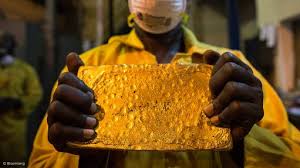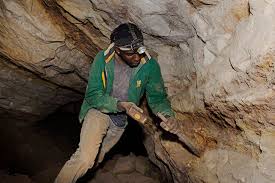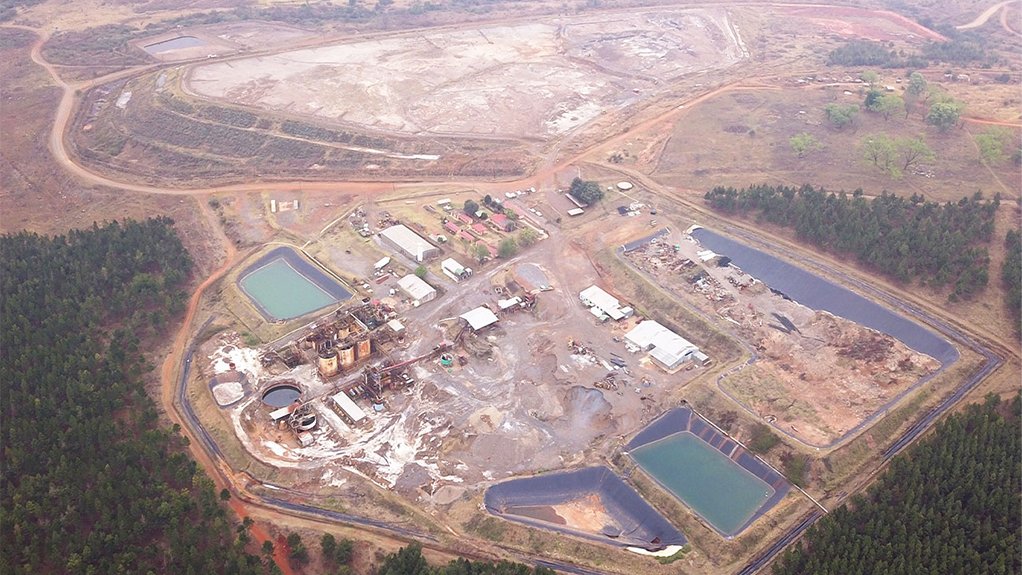Precious Metals

Gold Fields to Extend Tarkwa After Lifting Reserve Pricing

Market Forces Drive Strategic Reserve Repricing at Ghana's Premier Operation
Gold Fields to extend Tarkwa after lifting gold reserve price reflects a calculated response to unprecedented market conditions and inflationary pressures reshaping the mining landscape. The company elevated its group-wide reserve price from $1,500 per ounce to $2,000 per ounce, while simultaneously increasing resource pricing from $1,725 to $2,300 per ounce.
This strategic adjustment reflects the 50% surge in gold prices throughout 2025, with the precious metal reaching peaks near $4,300 per ounce before settling at approximately $3,965 per ounce as of November 2025. The substantial gap between current market pricing and the revised reserve threshold creates a robust economic buffer of nearly $2,000 per ounce. Furthermore, this gold prices as inflation hedge strategy demonstrates the company's forward-thinking approach to asset valuation.
Gold Price Trajectory Supports Higher Valuations
The remarkable price appreciation witnessed in 2025 has fundamentally altered the economic landscape for gold mining operations worldwide. With bullion trading at levels that would have seemed extraordinary just years ago, mining companies are reassessing their long-term asset valuations to reflect this new reality.
Industry-standard reserve pricing methodologies typically incorporate long-term price assumptions based on consensus forecasts, inflation adjustments, and risk premiums. Gold Fields' approach aligns with these best practices while acknowledging that sustained higher prices have shifted the baseline for economic viability across their portfolio. Moreover, comprehensive gold price highs analysis supports the validity of these elevated pricing assumptions.
Inflationary Pressures Reshape Cost Structures
Mining operations globally have confronted escalating costs across multiple dimensions, from energy and labour to equipment and consumables. These inflationary pressures directly impact the minimum gold price required to maintain profitable operations, necessitating upward adjustments to reserve pricing thresholds.
The revised pricing framework at Tarkwa accounts for these structural cost increases while maintaining conservative assumptions about future operational efficiency improvements. This balanced approach ensures reserve calculations remain credible while capturing the full economic potential of the orebody. In addition, mining industry innovation trends continue to drive operational optimisation across the sector.
Transformational Impact on Gold Fields' Strategic Portfolio
The reserve expansion at Tarkwa delivers remarkable quantitative improvements that fundamentally alter the mine's position within Gold Fields' global portfolio. Mineral reserves surged 72% from 4.3 million ounces to 7.4 million ounces, while mineral resources expanded 26% from 8.9 million ounces to 11.2 million ounces.
| Reserve Category | Previous Total | Current Total | Absolute Growth | Percentage Increase |
| Mineral Reserves | 4.3M oz | 7.4M oz | +3.1M oz | +72% |
| Mineral Resources | 8.9M oz | 11.2M oz | +2.3M oz | +26% |
| Reserve Price Basis | $1,500/oz | $2,000/oz | +$500/oz | +33% |
| Resource Price Basis | $1,725/oz | $2,300/oz | +$575/oz | +33% |
Elevating Tarkwa to Cornerstone Status
Gold Fields' management has explicitly positioned Tarkwa as a cornerstone asset within their diversified mining portfolio. This strategic elevation reflects not only the reserve expansion but also the operation's demonstrated ability to generate substantial cash flows and operational improvements.
The mine delivered exceptional third-quarter performance with 621,000 ounces of production, representing a 22% increase compared to the same period in 2024. Equally impressive, all-in sustaining costs improved to $1,557 per ounce, an 8% improvement year-over-year, demonstrating operational excellence alongside reserve growth.
Portfolio Diversification Benefits
Tarkwa's enhanced reserve base provides Gold Fields with increased geographic diversification benefits across their multi-jurisdictional portfolio. While the company continues ramping up production at their Salares Norte project in Chile, the Tarkwa extension offers a counterbalance of established, cash-generative operations in West Africa.
This strategic positioning allows Gold Fields to optimise capital allocation between proven assets with extended life potential and newer projects requiring development capital. The company projects hitting the upper end of their 2.45 million ounce production guidance for 2025, with Tarkwa playing an increasingly significant role. Consequently, mineral exploration importance becomes even more critical for sustaining long-term growth.
Navigating Ghana's Mining Lease Renewal Framework
The path to extending Tarkwa's operational life beyond its April 2027 lease expiration requires successful navigation of Ghana's mining regulatory environment and stakeholder alignment with the Government of Ghana, which maintains a 10% ownership stake in the operation.
Gold Fields has initiated formal negotiations with Ghanaian authorities regarding lease renewal, positioning the expanded reserves as compelling justification for extension. The company's demonstrated commitment to operational excellence and substantial economic contribution to the local economy strengthens their negotiating position. However, according to Gold Fields' latest quarterly report, regulatory timelines remain a critical factor.
Government Partnership Dynamics
The Government of Ghana's direct equity participation creates aligned incentives for lease renewal success. As a 10% owner, the government benefits directly from Tarkwa's continued profitability and extended operational life, creating a foundation for constructive negotiations.
This partnership model reflects Ghana's broader mining policy framework, which seeks to balance foreign investment attraction with meaningful local participation and economic benefit retention. The substantial tax revenues and employment opportunities generated by Tarkwa's operations further support the renewal case.
Regulatory Compliance and Timeline Considerations
With approximately 17 months remaining until lease expiration, Gold Fields to extend Tarkwa after lifting gold reserve price operates within a defined timeline for completing renewal negotiations and securing necessary approvals. The company's proactive approach to initiating discussions demonstrates awareness of the regulatory complexity involved in such extensions.
Mining lease renewals in Ghana typically require comprehensive environmental impact assessments, community consultation processes, and detailed operational plans demonstrating long-term viability. Gold Fields' substantial reserve expansion provides concrete evidence supporting their extension application.
Current Gold Market Dynamics Create Favourable Extension Environment
The exceptional gold price environment prevailing throughout 2025 creates highly favourable conditions for justifying Tarkwa's life extension. With spot prices trading at $3,965 per ounce and having reached peaks near $4,300 per ounce, the economic case for continued operations appears compelling.
Furthermore, the gold price forecast 2025 indicates sustained upward momentum driven by geopolitical and economic factors. This creates an optimal environment for securing lease extensions.
The substantial margin between current gold prices and Tarkwa's $2,000 per ounce reserve pricing provides nearly $2,000 per ounce of economic buffer, offering significant protection against potential price volatility while ensuring robust profitability throughout the extended operational period.
Economic Viability Analysis
Tarkwa's demonstrated ability to generate strong cash flows at current cost levels, with all-in sustaining costs of $1,557 per ounce, creates substantial economic value at prevailing gold prices. This $2,400 per ounce margin above operating costs provides exceptional returns on invested capital.
The mine's operational efficiency improvements, evidenced by consistent cost reductions and production increases, suggest management has successfully addressed historical constraints that previously limited economic performance. These operational achievements support confidence in sustaining profitable operations throughout an extended mine life.
Market Price Projections Support Long-Term Viability
Industry analysts project continued strength in gold prices, with many forecasting levels exceeding $4,000 per ounce by 2026. These projections reflect persistent global monetary policy uncertainties, geopolitical tensions, and continued central bank purchasing programmes supporting precious metals demand.
Even conservative price scenarios well below current levels would support profitable operations at Tarkwa given the mine's improved cost structure and operational efficiency. This downside protection reduces investment risk whilst preserving significant upside participation in continued price appreciation.
Operational Excellence Enables Life Extension Strategy
Gold Fields' success in removing operational constraints at Tarkwa has been crucial in enabling the life extension strategy. The mine's 22% year-over-year production increase to 621,000 ounces in Q3 2025, combined with 8% cost improvements, demonstrates effective constraint management.
These operational improvements reflect targeted investments in:
- Processing capacity optimisation and throughput improvements
- Mining sequence adjustments maximising resource recovery
- Infrastructure upgrades supporting increased production volumes
- Technology integration enhancing operational efficiency
- Strategic Constraint Removal Implementation
The identification and systematic removal of operational bottlenecks has unlocked significant value at Tarkwa. Management's focus on addressing these constraints has enabled the mine to achieve production levels that support economic viability at the revised reserve pricing.
Technical improvements in ore processing, mining equipment utilisation, and operational scheduling have contributed to the dramatic performance enhancement witnessed in recent quarters. These efficiency gains provide a foundation for sustained operational excellence throughout the extended mine life.
Technology Integration and Process Optimisation
Modern mining operations increasingly rely on technological solutions to optimise extraction and processing efficiency. Gold Fields has implemented advanced systems for:
- Automated mining equipment reducing operational costs
- Real-time ore grade monitoring improving processing efficiency
- Predictive maintenance programmes minimising equipment downtime
- Environmental monitoring systems ensuring regulatory compliance
These technological investments support both immediate operational improvements and long-term sustainability requirements essential for lease renewal approval.
Industry Benchmarking and Competitive Positioning
Gold Fields' approach to life extension at Tarkwa aligns with industry best practices for maximising value from existing assets. Major mining companies increasingly focus on optimising established operations rather than pursuing higher-risk greenfield development projects.
The strategy reflects broader industry trends toward:
- Asset optimisation over new project development
- Reserve pricing adjustments reflecting current market conditions
- Operational constraint removal to unlock hidden value
- Strategic partnerships with host governments ensuring renewal success
- Peer Company Methodologies
Leading gold producers have adopted similar reserve repricing strategies in response to sustained higher gold prices. Companies including Barrick Gold, Newmont, and AngloGold Ashanti have adjusted their reserve calculations to reflect current economic realities.
This industry-wide trend validates Gold Fields' methodological approach whilst ensuring their reserve reporting remains competitive and credible within the broader mining sector. The consistency of approach reduces investor confusion whilst maintaining comparability across companies. Additionally, industry experts suggest that cash dividend strategies may become increasingly important as miners generate substantial free cash flow.
Success Factors in West African Operations
Mining operations in West Africa face unique challenges including regulatory complexity, infrastructure limitations, and political risk considerations. Successful life extensions require:
- Strong government relationships and community engagement
- Demonstrated operational excellence and environmental stewardship
- Substantial economic contributions to local economies
- Transparent communication regarding long-term operational plans
Gold Fields' established presence in Ghana through both Tarkwa and their Damang operation provides institutional knowledge and relationship capital valuable in navigating the renewal process.
Strategic Integration with Broader Growth Initiatives
The Tarkwa life extension integrates strategically with Gold Fields' broader growth portfolio, particularly the continued ramp-up of their Salares Norte project in Chile. This multi-jurisdictional approach provides operational and geographic diversification whilst balancing cash-generative established assets with higher-growth newer projects.
Capital Allocation Optimisation
The decision to extend Tarkwa's life reflects careful capital allocation analysis comparing returns from life extension investments against alternative uses of capital. The established infrastructure, proven reserves, and operational expertise at Tarkwa likely provide superior risk-adjusted returns compared to greenfield alternatives.
This approach aligns with industry trends toward maximising value from existing assets before pursuing new project development. The strategy reduces execution risk whilst preserving capital for higher-return opportunities within the portfolio.
Regional Strategy and Market Positioning
West Africa remains an important region for gold production, offering significant geological potential and established mining infrastructure. Gold Fields' commitment to extending operations at Tarkwa reinforces their strategic presence in this key producing region.
The company's dual-asset approach in Ghana, with Gold Fields to extend Tarkwa after lifting gold reserve price positioned for extension whilst Damang faces depletion, demonstrates portfolio management sophistication in balancing asset lifecycles within individual jurisdictions.
Risk Assessment and Mitigation Strategies
Despite favourable market conditions and operational improvements, extending Tarkwa's operations involves several risk factors requiring careful management and mitigation strategies.
Regulatory and Political Risk Management
Ghana's mining sector operates within an evolving regulatory framework that could impact lease renewal terms or operational requirements. Key risk factors include:
- Potential changes to mining taxation or royalty structures
- Environmental compliance requirements becoming more stringent
- Community engagement obligations expanding over time
- Currency fluctuation impacts on operational economics
Gold Fields' established presence and positive relationship history in Ghana provide some protection against these risks, though continued vigilance and proactive engagement remain essential.
Technical and Operational Risk Considerations
Extended mining operations inevitably face technical challenges as ore bodies mature and infrastructure ages. Critical risk areas include:
- Geological uncertainty in extended mining areas requiring additional exploration
- Infrastructure replacement and upgrade requirements increasing capital needs
- Environmental monitoring and remediation obligations expanding over time
- Workforce development and retention challenges in remote locations
The company's demonstrated operational excellence and constraint removal success provide confidence in their ability to manage these technical challenges effectively.
Performance Measurement and Success Metrics
The success of Tarkwa's life extension strategy will be evaluated against specific performance indicators measuring operational, financial, and strategic objectives. Gold Fields has established clear metrics for assessing progress toward extension goals.
Key Performance Indicators
Critical success metrics include:
- Production Volume Targets: Maintaining or exceeding current production levels of approximately 620,000 ounces quarterly
- Cost Management: Sustaining all-in sustaining costs below $1,600 per ounce
- Reserve Replacement: Continuing exploration success to maintain or grow reserve base
- Environmental Performance: Achieving zero significant environmental incidents
- Safety Standards: Maintaining industry-leading safety performance metrics
Timeline Milestones and Decision Points
The extension strategy operates against defined milestones:
- Lease Renewal Completion: Target completion by end-2025 or early 2026
- Operational Constraint Removal: Full implementation by mid-2026
- Infrastructure Upgrades: Major capital projects completed by end-2026
- Production Optimisation: Achieving sustained production targets by 2027
These milestones provide clear benchmarks for measuring progress whilst maintaining flexibility to adjust strategies based on evolving conditions. However, Gold Fields to extend Tarkwa after lifting gold reserve price remains contingent upon successful lease renewal negotiations and continued operational excellence.
Important Disclaimer: This analysis is based on publicly available information and should not be considered investment advice. Mining operations involve significant risks including commodity price volatility, regulatory changes, and operational challenges. Readers should conduct independent research and consult qualified professionals before making investment decisions. Future operational performance, reserve calculations, and lease renewal success cannot be guaranteed and may differ materially from current expectations and projections.












